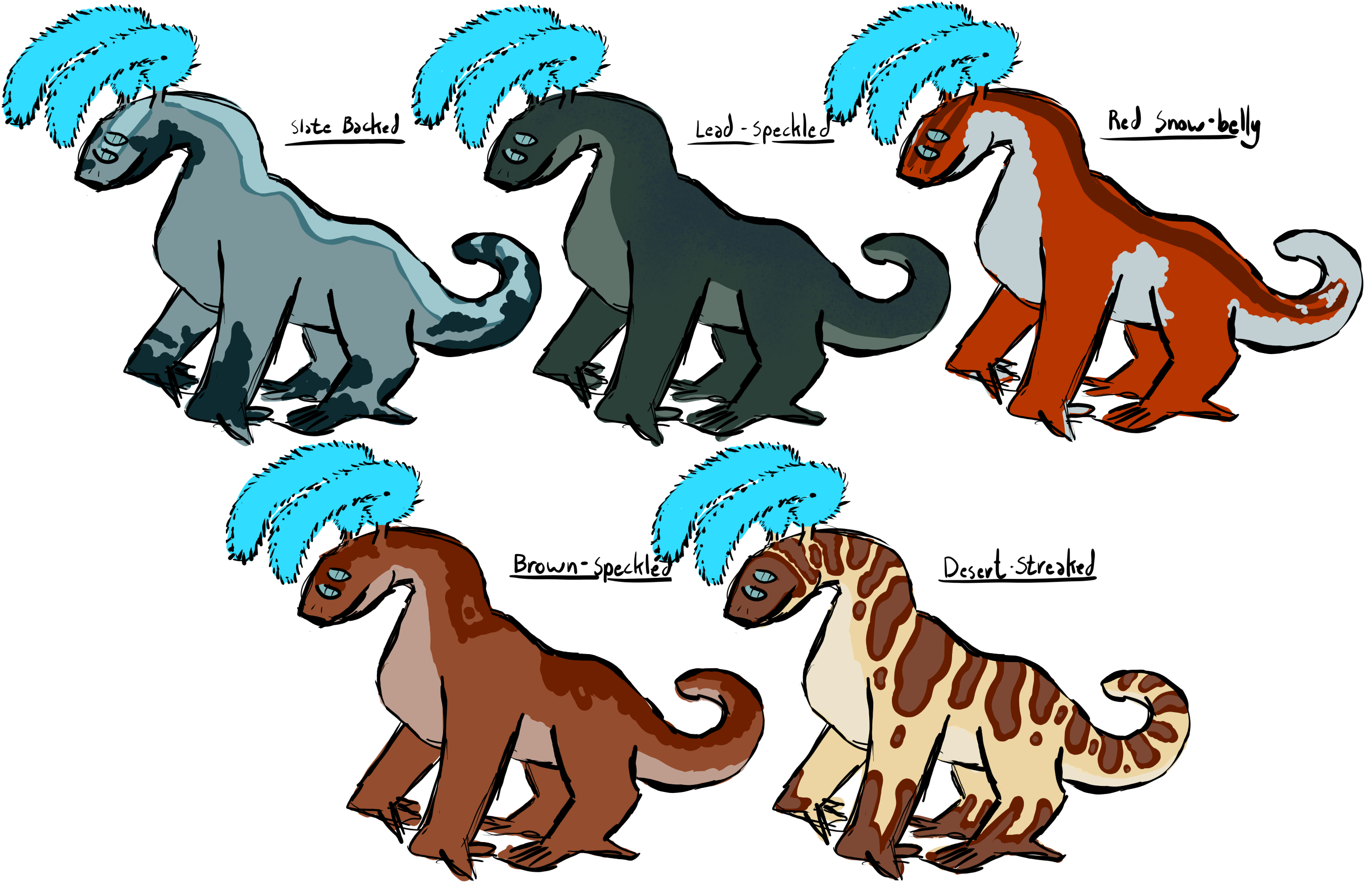Ninab
Ninabs are carnivorous quadrupedal amphibians who have two life stages, an aquatic infancy and a air-breathing adulthood.
Sperm producing ninabs do not even develop legs or lungs, and die shortly after reaching sexual maturity at a few years of age. Many ninab cultures do not consider sperm producing members of the species to be truly “ninab”.
Adult form ninab have four common hormone-based body types; two based on physical size and two based on the length of their lures. So you have large/long, large/short, small/long, and small/short. As with all things in biology, these metrics come on a spectrum. The small and short variants are more common.
Ninab’s early life is spent as as a fully aquatic larval stage, where there is not a significant distinction between sexes, or size classes. Difference in lure length is still notable at this age. Ninabs spend a few years in this larval state before morphing into their adult forms.
Because a single ninab produces hundreds of eggs at a time, and as many cultures do not value the lives of the sperm producers more then they do any other animal, there is often a large cultural emphasis in leaving the water for the first time, and very few cultures care for young ninabs who are still in larval form. This can come off as callous to some members of other species, but is a fairly necessary stance to take when a group of ten parents can produce thousands of children every year.
Ninabs were the last of the current members of the galactic community to leave their home system, at least until humans showed up 1,000 years ago. Ninabs left their home system 3,000 years ago.
